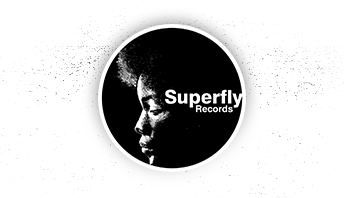


New Orleans has inspired many photographers with its strong association to music. For example, Bernard Hermann who made superb shots in Bon Temps Roulés, Lee Friedlandler’s Jazz People of New Orleans, or William Claxton’s New Orleans 1960. Following their footsteps, Alexis Pazoumian has made his own approach, seeking that part of our soul which we call music.
Ten years after Katrina, the French photographer started his long work on New Orleans. How to start again? How can a new future be built when the past has been wiped out by a tidal wave?
After his work on the favelas in Rio which attracted a lot of attention, Alexis Pazoumian, now represented by Hans Lucas Studio, arrived in New Orleans in August 2015 where he stayed for several months until March 2016. Very quickly, he would see in the neighborhoods of the most creole of the made in the USA cities an echo to the reflections which he has had since he chose to become a photographer: the questions of humanity, identity, society and territory. Above all, he perceived a common thread: music, a real unifying factor in New Orleans, the cradle of jazz and sanctuary of funk and soul music. “I thought that just music would be too much of a cliché. But I realized that music was part of everyone’s daily life. It was the key to reconstruction, to renaissance!” That is how, with his camera body – Mamiya 7, “there is nothing like using an analog medium format: it enhances the colours and sharpness in spite of the cost of each film” – Alexis Pazoumian explored the city, seeing it with this vision, to bring out, little by little, unique stories, all conveying the general atmosphere.
First stop: Treme the big creole neighborhood, facing the historic but much too touristic French Quarter. It became especially well-known after the success of the series of the same name on HBO. In Treme, there are still many musicians, social clubs where brass bands gather and some other emblematic places. Alexis focused on Mount Zion Baptist Church, where gospel still echoes in the heart of its followers. He went every Sunday. “I almost became a member. I was able to record all the church services where people sang and played!” His images convey the almost mystic fervor of these temples where music is quintessential. Nevertheless, in line with his aim to witness everyday life as closely as possible, the photographer decided to move further away from the city centre: he went to Ninth Ward which was literally under water in August 2005.
In this neighborhood, an ill-famed district, you can find the Musicians’ Village. This project was created by two native inhabitants of Crescent City, the saxophonist Branford Marsalis and the pianist Harry Connick Jr., with the support of the Habitat for Humanity Foundation, created by Jimmy Carter. The aim was to rehouse the musicians in some seventy houses to enable them to carry on.
“I had been looking out for sounds for a week, without any luck, until I heard a trombone. It was Stephen!” This musician introduced him to all the community, including the well-known pianist Al Johnson who lived there. “I was able to gain a deep insight into their traditions.” He was thus invited to the jazz funeral of a musician’s mother. These are processions where people dance their way to the cemetery. He also vibrated to the rhythm of the Indian Practices, these Sunday meetings where musicians compete against each other with their voices to the sound of the drum in ceremonies which remind us of hip-hop battles. For Alexis Pazoumian, it was the opportunity to see one of the most visual aspects of music in New Orleans: the tribes of the Mardi gras Indians who are in fact Afro-American tribes. They make their costumes with great patience and rehearse all year to celebrate the carnival in their funky manner. Indeed, he was also able to meet the person every one longs to meet, the young Chief, Jermaine Cooper Bossier.
Even though he was caught up in the music he recorded almost all these intense moments, thinking one day he would create a plurimedia project, it is the daily life he captures in his images: for example, the ghostly bar of Kermit Ruffins, the trumpet player, one of the brass band legends, with whom he ate shrimps, a local speciality, or the busy streets with the Hot 8, one of the most famous brass bands of the city, or very late in the bars hanging around with the musicians who had just finished their concerts…
Each time, he captures moments of life, vibrations, which, all put together, show the spirit which continues to fill this city, to regenerate it in spite of all the problems. The proof of this vitality can be seen, intact, at the St. Augustine High School, a school which takes in children from deprived areas. There again, music acts as a catalyst: “They all dream of becoming part of a brass band, of playing on Frenchmen Street (the street where you can find the best clubs in town). They rehearse every day, summer or winter, for Mardi gras, where they will hold up proudly their school blazon. That is how, through music, they find their inner balance.”
Just like the promise of tomorrows which will really swing in New Orleans, Alexis now present us his superb book Faubourg Treme, based on his report deep into the soul of a city which is unique.